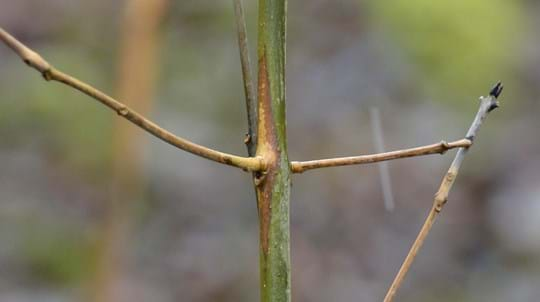
Pests and diseases

Principal Pathologist - Forest Research
Despite the fact that Dutch elm disease has been known and studied for almost 100 years, myths about this tree disease are not in short supply. For example, don’t be fooled by the word Dutch – the disease didn’t come from the Netherlands and it certainly doesn’t just affect Dutch elms (Ulmus x hollandica). You will also frequently hear people say “there are no elms left now, they’ve all been killed by Dutch elm disease” and that isn’t true either. In Britain, we probably have more elm trees now than we did before the current epidemic which we think started in the late 1960s. However they tend to be relatively young elms whilst magnificent mature elms that graced much of countryside are more of a rarity.
Although the origins of Dutch elm disease are still a matter of speculation, we do know that elms across Europe have been struck by two epidemics. The first was recognised just as WW1 ended. Sterling work by Dutch scientists (hence, Dutch elm disease) soon identified the causal agent as the fungus we now call Ophiostoma ulmi. They discovered that it was spread from diseased to healthy trees by elm bark beetles. Their careful work also revealed the disease to be a ‘vascular wilt’ because the fungus can move around the water conducting system and incite wilt symptoms that can cause the demise of a large tree in a few months.
The first elm disease invasion peaked in Britain during the 1930s and then dwindled, we think in part because O. ulmi contracted a viral disease of its own which made it much less effective at killing elms. However, a new and even more aggressive elm pathogen, Ophiostoma novo-ulmi, then apparently slipped into the country on imported logs from Canada with devastating results.
Although efforts were initially made to control the upsurge in disease in the 1970s, these were hampered by the failure to understand early enough that an entirely new Dutch elm disease pathogen had arrived. This allowed it to get a head start. But we were not alone! The pandemic caused by Ophiostoma novo-ulmi has affected elms across the Northern Hemisphere – from America to Asia. It has even reached New Zealand where it has established on introduced but naturalised elms. Not surprisingly this behaviour qualifies it as one of the 100 Worst Invasive Alien Species.
Although controlling the disease is difficult, it is surprisingly easy to identify. Around May or early June, look for signs of wilt or ‘flagging’ on elm twigs and branches. Peeling away the still-live bark from around one of twigs should reveal confirmation of the disease in the form of brown-black streaks in the wood. This is a sign of tyloses – blockages in the xylem which prevent water movement and are caused by the fungus.
Dutch elm disease is now only actively controlled in a few parts of Britain and there is no obligation to report affected trees. But if you’d like a chance to remind yourself how wonderful mature elms can look, you can get your fix by visiting the elms around Brighton and Hove. Here and in the surrounding countryside of East Sussex a vigorous disease control campaign does its best to conserve these trees and as a result, the wide array of elms around Brighton has been given National Elm Collection status.